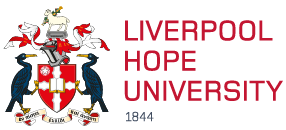On the week marking the 50th anniversary of Blood Sunday, Stephen Kelly, Professor of Modern Irish History and British-Irish relations, reflects on the killing of thirteen civilians by members of the British Army. The killings brought worldwide attention to the Northern Ireland conflict and left a dark and long shadow over the city of Derry/Londonderry.
Background[1]
To understand the events of the day that has become generally known as Bloody Sunday, it is important to provide some historical background and context. Derry, by 1972, was a ‘troubled city with a divided society, in a troubled and divided country’. Sectarian divisions ran deep through Northern Ireland between nationalists and republicans (most of whom were Catholic) and unionists and loyalists (most of whom were Protestant). In general terms, the ‘former wanted Northern Ireland to leave the United Kingdom and unite with the rest of Ireland, while the latter wanted it to remain part of the United Kingdom’.
In the immediate years leading to Bloody Sunday, Derry had borne witness to clashes, often nasty confrontations, between the nationalist community and the Royal Ulster Constabulary (RUC). In the eyes of most nationalists, the RUC had become a system of oppression, regarded by many in the nationalist community ‘not as impartial keepers of the peace and upholders of the law, but rather as agents of the unionist Northern Ireland Government’.
Thus, in August 1969, when units of the British Army first arrived in Derry as ‘aid to the civil power’, they were initially welcomed by the majority of Derry’s nationalist population. The honeymoon period was short-lived, however. By January 1972, the nationalist community in Derry (as elsewhere throughout Northern Ireland) had largely turned against the British Army, ‘many believing that the Army, as well as the RUC, were agents of an oppressive regime’.
Large sections of nationalist Derry, incorporating the ‘Bogside’, were now “no go” areas, dominated by the resurgent Provisional Irish Republican Army (PIRA), where ‘ordinary policing could not be conducted’ and where even the British Army ‘ventured only by using large numbers of soldiers’. What followed, almost daily, were acts of violence with the loss of many lives, amongst civilians, British soldiers, RUC officers, Loyalist paramilitaries and IRA combatants.
The Northern Ireland government’s decision to introduce internment without trial of ‘suspected terrorists’ in August 1971 only further heightened tensions. The nationalist community, in particular, regarded internment without trial with ‘abhorrence, considering it yet another illegitimate means’ employed by the Northern Ireland government. The vast majority of those interned under this draconian legislation were Catholics; between 1972 and 1975 ‘1,981 people were detained; 1,874 were Catholic/Republican, while 107 were Protestant/Loyalist’.[2] At the same time, the Northern Ireland government imposed a blanket ban on marches and processions.
Bloody Sunday
These were the circumstances that greeted the Northern Ireland Civil Rights Association (NICRA) protesters as they commenced their peaceful march in Derry to protest against internment without trial on the morning of 30 January 1972.
The Northern Ireland authorities sought to prevent this march. However, given the predicted size of the crowd, a decision was reached to allow the march to proceed in the nationalist areas of the city but to stop it from reaching Guildhall Square (in the centre of the city). In response, the British Army erected a series of barriers on the roads and streets around the main square, manned by British soldiers. To ensure that the British Army had sufficient troop levels, under the instructions of Major General Robert Ford, Commander of Land Forces in Northern Ireland, the fateful decision was taken to order that 1st Battalion, The Parachute Regiment (1 PARA), stationed near Belfast, should travel to Derry.
1 PARA arrived in Derry on the morning of Sunday 30 January 1972. This battalion soon ‘erected barricades on the streets leading to Guildhall Square and manned those barriers’. At the same time, the civil rights march, which included amongst its ranks thousands of protesters, commenced its procession in the Creggan area of the city, making its way through the nationalist part of the city towards William Street. On reaching William Street, the protestors were confronted by members of the British Army. Shortly after, rioting broke out, with members of the crowd ‘throwing stones and similar missiles at the soldiers’. In retaliation, British Army soldiers stationed at the barriers fired baton rounds (often called rubber bullets), while others fired CS gas.
The murder of 13 civilians
The British Army unequivocally were the first to open fire. Two members of 1 PARA, stationed at a derelict building on William Street, fired five shots. Their target was Damien Donaghey (aged 15) who was on the other side of William Street and ‘who was wounded in the thigh’. Shortly after this incident, a member of the Official IRA ‘fired a rifle at soldiers who were on a wall on the side of the Presbyterian church’ (importantly for the readers to note this IRA paramilitary was not a part of the peaceful protest march).
Apparently against stated orders, British Army Support Company in vehicles broke through some barriers located in Little James Street, thus entering the heart of the Bogside. Many civilians were in the vicinity when the British Army vehicles arrived. ‘On disembarking soldiers fired baton rounds and some sought to make arrests’. What followed next was utter pandemonium.
British soldiers of Mortar Platoon ‘opened fire with their rifles’. Jackie Duddy (aged 17) was ‘shot and mortally wounded’. Shortly after, British soldiers of Anti-Tank Platoon opened fire. One of these shots ‘hit and mortally wounded’ Michael Kelly (aged 17). Soon after civilians had carried Michael Kelly away, British soldiers in Rossville Street ‘fired at and mortally wounded five more people’. They were Hugh Gilmour (aged 17), William Nash (aged 19), John Young (aged 17), Michael McDaid (aged 20) and Kevin McElhinney (aged 17).
As many civilians fled, fearing for their lives, British soldiers of Anti-Tank Platoon ‘shot and mortally wounded’ William McKinney (aged 26) and Jim Wray (aged 22). Jim Wray was shot twice, the second time ‘probably as he lay mortally wounded on the ground’. One of these soldiers then went from Glenfada Park North to Abbey Park. This British soldier mortally wounded Gerard McKinney (aged 35). His ‘shot passed through this casualty and also mortally wounded’ Gerald Donaghey (aged 17). Their deaths, however, were not the end of the killings. Shortly afterwards, British Army gunfire hit Bernard McGuigan (aged 41) and Patrick Doherty (aged 32), ‘instantly killing the former and mortally wounding the latter’.
In the space of only ten minutes, between the first and last murder, the city of Derry had been changed forever. Thirteen innocent men were dead, while fourteen others were injured (one of the injured later died). In the words of Lord Saville, Bloody Sunday was a ‘tragedy for the bereaved and the wounded, and a catastrophe for the people of Northern Ireland’.
Historical significance
Let us commence with a few indisputable facts. Firstly, on 30 January 1972, thirteen civilians were killed by British Army gunfire during a peaceful protest organised by the NICRA in the city of Derry/Londonderry. Secondly, the thirteen people killed did not pose a ‘threat of causing death or serious injury’ on the day in question. Lastly, members of the British Army, namely 1st Battalion, The Parachute Regiment, ‘knowingly put forward false accounts in order to seek to justify ‘their reason for opening fire on that day’.
In 2010, following over a decade of investigation and at a cost of £200m, the British government published the much-anticipated Report of the Bloody Sunday Inquiry. Chaired by Lord Saville, this report, the fruit of the most expensive public inquiry in British legal history, delivered a verdict which the victims of Bloody Sunday had always known: ‘None of the casualties killed by the British Army’s Parachute Regiment ‘was armed with a firearm or (with the probable exception of Gerald Donaghey) a bomb of any description’. Lord Saville’s findings were shocking, cutting deep into the heart of the British establishment.
Indeed, then UK prime minister David Cameron apologised to the Bloody Sunday families. ‘There is no doubt, there is nothing equivocal, there are no ambiguities’, he informed the House of Commons in June 2010, that ‘what happened on Bloody Sunday was both unjustified and unjustifiable. It was wrong’.[3]
Shortly after the publication of Lord Saville’s findings, the Police Service of Northern Ireland (PSNI) commenced a murder investigation. In late 2016, following several years of investigation, detectives submitted their files to the Public Prosecution Service (PPS) of Northern Ireland. Based on an examination of some 125,000 pages of material, prosecutors announced that so-called ‘Soldier F’, who opened fire on civilians on Bloody Sunday, would face criminal charges for the murders of James Wray and William McKinney. However, to the dismay of the victims’ families, in July 2021, it was announced Soldier F would not face trial following a decision by PPS of Northern Ireland.[4]
Fifty years on from Bloody Sunday, in the context of Brexit and the current global pandemic, the continued failure of the political parties of Northern Ireland, together with the inertia of the British government, to set aside tribal differences has resulted in the goal of reconciliation being kicked further down the road. To address this conundrum, the political parties of Northern Ireland have an obligation, working closely with the British and Irish governments, to redraw the conflict narrative of Catholic versus Protestant, Republican versus Loyalist, nationalist versus unionist and Brits versus Irish. In its place, the people of Northern Ireland must construct a narrative of sharing, reconciliation and most of all forgiveness.
[1] Unless otherwise stated the information quoted in this article is sourced from the Report of the Bloody Sunday Inquiry, ‘Principal Conclusions and Overall Assessment of the Bloody Sunday Inquiry’, chaired by The Rt. Hon The Lord Saville of Newdigate (published 15 June 2010).



